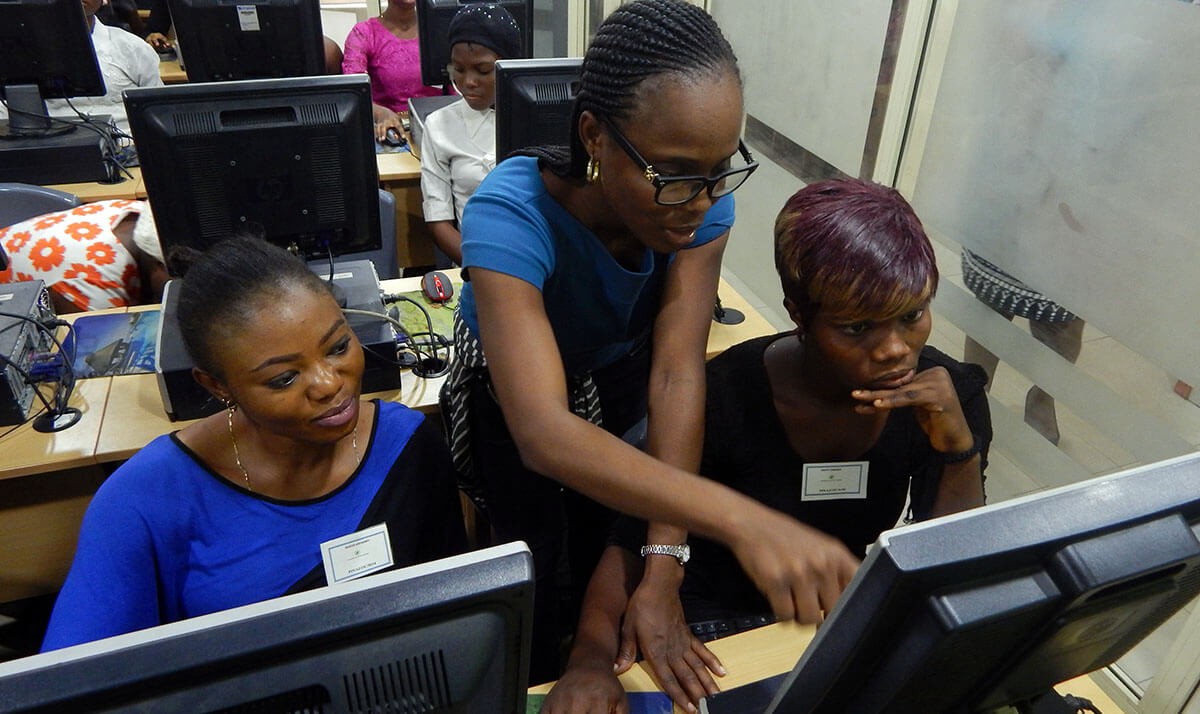“To deliver sustainable development for everyone, we must deliver digital equality.”
That’s the message the Web Foundation will be taking to the United Nations General Assembly in New York this year, the first such gathering since world leaders agreed the Sustainable Development Goals, which have connectivity, gender equality and transparency at their core.
The Web has the potential to be a great equalising force, providing new opportunities and leveling the playing field through unprecedented access to information. But this potential will only be realised if no one is left behind. The SDGs include a universal access target as well as the ambition to empower more women using technology. But if current trends continue we will not achieve that goal until 2042 – 22 years after the target date.
Leaving no-one behind means closing the digital gender gap, but our research has shown that women in the developing world are up to 50% less likely to be online than men. When we took a closer look at the policies currently in place to change this across 10 countries in the Global South, it was clear that not enough is being done to change this and meet the SDG targets: just one country (Colombia) scraped a passing grade in our scorecards.
But the good news is, if we REACT to this worrying trend now, changes to policies and practices can make a difference. Last week at our inaugural Africa Summit on Women and Girls in Technology, we identified five things we need urgently to make sure we deliver on the goals:
Rights: Guarantee and enhance everyone’s rights online. The Web can’t serve as an empowering space, unless we know everyone’s rights will be protected online.
- Action: Ensure the Web is a safe space for women, whilst protecting fundamentals such as freedom of speech and privacy. Clear laws must be in place in every country, ideally through a Digital Bill of Rights.
Education: Use education to equip everyone – especially women – with the skills they need. There’s a formidable gender gap online — both in access and use. Web Foundation research shows that even when poor urban women do get online, they are half as likely as men to use the Web for important purposes like looking for work or finding health information online. But the same research also showed that education is the most powerful tool we have to have close this gap.
- Action: Include digital skills in primary school curricula in every country around the world, especially targeted at girls. Take further steps to eradicate the gender gap in access to higher and tertiary education.
Access: Prioritise making Internet access affordable. Although most countries in the world meet the UN’s affordability target (basic access at less than 5% of monthly incomes), more than half the world’s people are still offline, the majority of them women.
- Action: Adopt a more ambitious affordability target of ‘1 for 2’ – 1GB of data monthly for less than 2% of monthly incomes. We want the UN Broadband Commission, which is also meeting in New York, to adopt this as an official target, and for every country to put in in their national broadband plan.
- Action: Establish ambitious programmes that offer free public access put in place, especially targeting women and migrant populations.
Content: Ensure what women find online is relevant and empowering. Unless content on the Web is valuable and empowering, people simply won’t use it. Governments can play an important role here both by delivering vital services online and ensuring important content is available in local languages.
- Action: Get governments to ensure critical content relevant to women is readily available online in their local languages. Examples of this could include information on sexual and reproductive health, legal rights and digital financial services.
Targets: Set and report on progress against gender goals. All too often, promises are made in broad terms, with no measurable targets set.
- Action: Get every country in the world to update their connectivity targets as mandated by the SDGs, including clearly laying out how they will close the gender gap.
- Action: Ensure countries also report frequently and publish data on these targets in open formats so that everyone can keep tabs on progress and look for creative solutions.
We will continue to put digital equality at the forefront of our work, and invite new partners from government, civil society and the private sector to join us in taking forward the digital inclusion recommendations from the UN High Level Panel Report on women’s economic empowerment. Follow us on Twitter @webfoundation or reach out to the team in New York this week to get involved with our research and advocacy: @ninanjira @nnenna @SoniaA4AI

Laura Leeson
November 19, 2016
Great article! We are a start-up non-profit aiming to specifically work on three of those points: Access, Education, and Content, in order to improve digital equality.
Reply
Godson Amekuedi
March 24, 2018
The information given is very helpful, and we will like to get indept information on your ideas about the following barriers preventing women & girls and girls for participating fully in the use of digital technology in their daily lives. Affordability, safety, access, education, health and trading, skill requirements and provision of time.
Reply